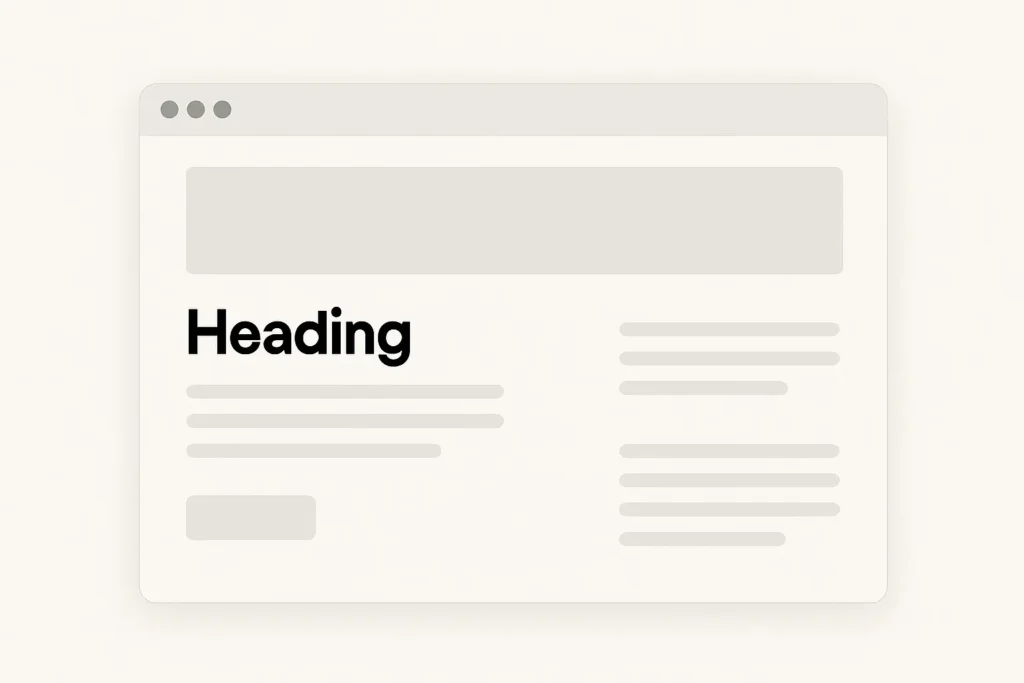Have you noticed how some call-to-action buttons make you click instantly, while others feel invisible?
Drawing from our experience in UX research, even after countless user tests, designers and developers still scratch their heads when users behave this unpredictably. Sure, traditional website analytics show where people click and how they scroll through your pages.
But what about the first thing that catches a user’s attention? Where do eyes go naturally, and which interfaces feel easy to use versus frustrating?
The answer to all that is already here, it’s eye-tracking UX.
If you’re ready to stop guessing about what your users actually see, stick around. We’ll show you how this eye tracking UX works and why it’s becoming such a big deal for everyone who designs digital products.
Firstly, let’s clear up what eye tracking UX is.
Eye tracking UX is basically technology that watches where your eyes go when you’re looking at a screen. It’s like having a smart camera that follows your gaze around as you scroll through a website or tap around on an app.
So, instead of having to guess what catches people’s attention, this tech gives you actual proof of what users really look at.
The way this whole thing works is actually pretty cool once you understand it. Eye tracking devices use special cameras with infrared light (that’s light you can’t see with your naked eye).
This invisible light shines onto your eyes and creates tiny reflections on different parts of your eye, like your pupil and the clear front part called the cornea. Then the cameras capture these reflections, and clever computer programs figure out exactly where you’re looking by comparing how these light spots move around.
The technical name for this is “pupil-centred corneal reflection,” but really it’s just tracking how your eye moves by watching these light reflections bounce around.
But we believe the most exciting part is gaze-based interfaces, which let apps respond to your eyes for a simpler, more natural experience.
So, how exactly is gaze-based UX better than traditional analytics? Here’s what makes it so useful:
While traditional UX research methods have their place, eye tracking is genuinely changing how we understand user behaviour. Next, let’s look at exactly how this change is happening.

Traditional UX research methods like click tracking and user surveys give you data, but they leave huge gaps in understanding. You might know that 60% of users clicked your button, but you have no idea why the other 40% completely ignored it.
Eye tracking fills this missing information by showing exactly where attention goes before any clicking happens. Here’s how.
Eye tracking reveals three things that click data simply cannot capture.
These little moments happen in just a few seconds before users actually touch anything on your screen. But they’re incredibly important because they help designers create user interfaces that feel natural instead of making people want to pull their hair out.
One way to make sense of these moments is by looking at the visual data they leave behind. Heatmaps use colour to show where people look most, so you can spot parts of a page that get ignored and need moving.
From there, scan paths trace the route users’ eyes take, and fixation points show where they pause, signalling interest or confusion. Together, these tools tell you what to fix next.
Eye tracking helps you catch problems early, before you’ve spent loads building the wrong thing. You can spot and fix issues while changes are still easy and cheap to make.
Most importantly, eye tracking finally answers that question, keeping every UX researcher awake: “I know what my users are doing, but why are they struggling?” This technology bridges the gap between actions you can measure and the reasons behind them.
Now that you understand how eye tracking reveals user behaviour, the next step is learning how to use these insights to build better interfaces.

Now it’s time to put the data to work. These tips will help your interface match how people really look at it.
When heatmaps show your call-to-action buttons appearing as cold blue areas, that’s a clear sign they need to move. That means people aren’t even seeing it, let alone clicking it.
Our advice is to move important buttons to the red “hot zones” where users’ eyes naturally go. Most people start looking at the top-left corner of a screen and then move toward the centre. So if you put your most important call-to-action buttons in these spots instead of hiding them at the bottom of the page, you’ll see much better results.
Eye tracking shows you exactly where people get confused by revealing those scattered, jumpy scan patterns. So, when you see someone’s eyes bouncing around your navigation menu like a pinball, that’s your cue to simplify things.
You can do this by cutting down on menu options, using clear labels, and grouping similar items. The goal is to make your interface feel natural instead of confusing.
We all know cluttered pages can confuse users, so aim for a clean, simple layout. You can use white spaces to give elements room to breathe and highlight the most important content so it catches attention quickly.
What’s really cool is that these design improvements are also incredibly valuable for people who have cognitive or visual challenges.
When you make navigation clearer, you’re reducing the mental effort it takes to use your site. Better contrast and simplified layouts also make it easier for people with vision problems to see and use your site.
But there are some important challenges and concerns that many designers completely overlook when working with eye tracking technology.

While everyone’s excited about all these amazing design possibilities, there are some serious issues you don’t want to overlook as a designer using eye-tracking technology.
The following problems can really hurt user experience and digital accessibility if you’re not careful about addressing them:
Here’s something that should make you think twice: your gaze data reveals way more about you than you probably realise. We’re talking about really personal stuff like your emotional state, personality traits, health conditions, and even your sexual preferences.
Companies can use this information for targeted advertising or emotional manipulation without you even realising it’s happening.
The scary thing is that most people don’t understand what they’re giving away when they agree to eye tracking. Your gaze patterns are unique to you and incredibly revealing about your inner thoughts and feelings.
Now, one person’s gaze patterns don’t represent everyone, and this is where things get really problematic. Research shows that eye tracking accuracy varies significantly between different ethnic groups, and cultural backgrounds strongly influence how people look at and process visual information.
So, if you’re designing based on data from just one type of user, you’re basically creating interfaces that work well for some people while completely failing others. That’s the opposite of good UX design.
Gaze-based controls can also cause serious eye fatigue, especially when users have to stare at targets for too long or use systems that require constant focused attention.
And for people with disabilities who rely on eye tracking for digital accessibility, this fatigue becomes a real barrier rather than a solution to their problems.
The good news is that responsible designers can address these issues with some thoughtful approaches. Here are your steps:
Take these simple precautions, and your design will work better for more people. You’ll also build trust by showing you care about their needs.
Did this article give you a new view of user experience?
To recap, eye tracking UX shows you the gap between what users do and what they’re really trying to accomplish. Those hesitation patterns, the confused scanning, and the relief when they finally find what they’re looking for are all visible in their gaze data.
So, the next time you’re stuck wondering why users struggle with your design, remember that sometimes the answer is right there, waiting for you to simply look.